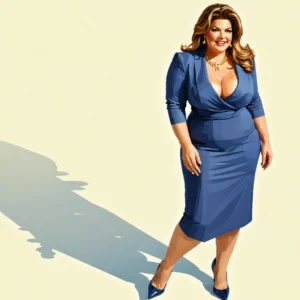
Introduction
The film “The Home” provides a unique lens through which we can analyze contemporary societal challenges, particularly as they pertain to aging, the fear of senility, and the dilemmas of modern elder care. In a world where populations are aging and new business opportunities arise from the growing need for specialized care facilities, this Swedish thriller challenges traditional notions of what it means to be ‘at home’ during later stages of life. While the film operates within the horror genre, its underlying themes resonate with business leaders, policy makers, and healthcare professionals striving to navigate the complexities of elder care management and the financial risks associated with a vulnerable demographic.
Analysis of Aging and Elder Care Themes
Cultural Depictions and Psychological Implications
The film disrupts traditional cinematic expectations by shifting focus from youthful terror to the haunting realities faced by the elderly. By emphasizing themes of dementia, senility, and potential elder abuse, “The Home” not only entertains but also compels viewers to confront uncomfortable truths about aging societies. From a business perspective, several key points emerge:
- The Growing Market: With increasing life expectancy, there is a surge in demand for specialized care facilities that can accommodate not only physical ailments but also cognitive challenges.
- New Revenue Streams: Companies in the healthcare sector are diving into innovative technologies—such as AI-driven monitoring systems—to improve quality and streamline services, reflecting a strong correlation between technological implementation and elder care facility management.
- Regulatory Challenges: The portrayal of neglect and mistreatment in the film opens up discussions about tighter regulatory frameworks, which could ultimately benefit the reputation and financial stability of organizations prioritizing ethical practices.
Business Environment and Market Analysis
Business analysts see “The Home” as a cautionary tale and an opportunity for forward-thinking enterprises. The film’s narrative draws parallels between the horror within the walls of the care home and the growing financial risks related to elder abuse and neglect. The following business implications are noteworthy:
- Risk Management: Companies developing elder care programs must account for risks ranging from operational failures to reputational damages. Implementing comprehensive risk assessment measures is now more crucial than ever.
- Investment Opportunities: The increased attention to senior care creates lucrative opportunities for investors. With proper due diligence, ventures focusing on advanced healthcare technologies or sustainable, compassionate care models are positioning themselves to capture a significant share of the market.
- Policy Reform: Films like “The Home” stimulate discourse among regulators about the necessity of reforming policies in long-term care facilities, potentially leading to tighter oversight and market stability, ultimately benefiting both caregivers and care recipients.
Business Implications in the Era of an Aging Population
Strategic Considerations for Healthcare Providers
Healthcare providers and elder care facility managers must navigate a delicate balance between profitability and ethical responsibility. “The Home” offers a backdrop for exploring this balance in a deeply human context. Several strategic areas emerge:
- Technological Integration: Incorporating modern monitoring and communication systems can not only prevent incidents of abuse but also enhance operational efficiency. For example, implementing AI-based health monitoring can provide early warnings for deteriorating conditions, leading to timely interventions.
- Staff Training and Development: Continuous professional development programs are essential in ensuring a workforce capable of addressing both the medical and psychological needs of elderly residents. Training sessions focused on empathy, crisis management, and modern caregiving techniques can transform facilities into safer, more supportive environments.
- Brand Reputation: In an age where corporate transparency is highly valued, maintaining an excellent record of care and safety practices becomes a strong competitive asset.
Investments and Market Trends
The broader business community is increasingly aware of the intersection between cinema and social commentary. The chilling narrative of “The Home” can stimulate investor interest in the following ways:
| Investment Areas | Key Opportunities | Potential Challenges |
|---|---|---|
| Healthcare Technology | Advanced monitoring, remote patient care | High initial costs, regulatory approval |
| Facility Management | Risk management systems, integrated care models | Workforce training, compliance issues |
| Senior Living Innovations | Smart home systems, adaptive design structures | Market acceptance, technological adaptability |
This table outlines how business leaders could derive value by focusing on targeted investments in areas associated with elder care. It emphasizes how innovation and ethical practices are intertwined in shaping a sustainable future.
Conclusions and Future Outlook
Wrapping Up the Business Case
Ultimately, “The Home” is more than a horror movie; it is a reflective mirror on society’s handling of its most vulnerable members. The narrative thrust prompts business leaders to consider how the portrayal of aging and care facility mismanagement might translate into real-world challenges. The film encourages a reassessment of current practices, urging a balance between profitability and human-centric strategies in elder care.
Future Strategies for Success
For businesses operating in this expanding sector, the following future-oriented strategies should be prioritized:
- Embrace Innovation: Continue to invest in technology that enhances safety and improves the quality of care. This includes digital transformation initiatives that promote data-driven decision-making.
- Foster Collaborative Networks: Build bridges between governmental bodies, healthcare providers, and technology innovators. Closer collaborations can result in more holistic solutions to the challenges presented by an aging population.
- Prioritize Transparency: Transparent operations not only build trust but also preemptively address regulatory concerns, creating a more resilient business model.
As we look to the future, the lessons imparted by “The Home” provide both a cautionary tale and a roadmap for navigating the evolving landscape of elder care management. Strategic investments, forward-thinking policies, and an unwavering commitment to ethical practices will be the cornerstones of a robust and compassionate business environment. Organizations that recognize and act on these insights are likely to see sustainable growth, even in sectors that face the uncertainties of demographic shifts and technological advancements. In a way, the film sets the stage for the new era of elder care—a sector rich with both challenges and opportunities, where business history is being redefined one innovation at a time.




